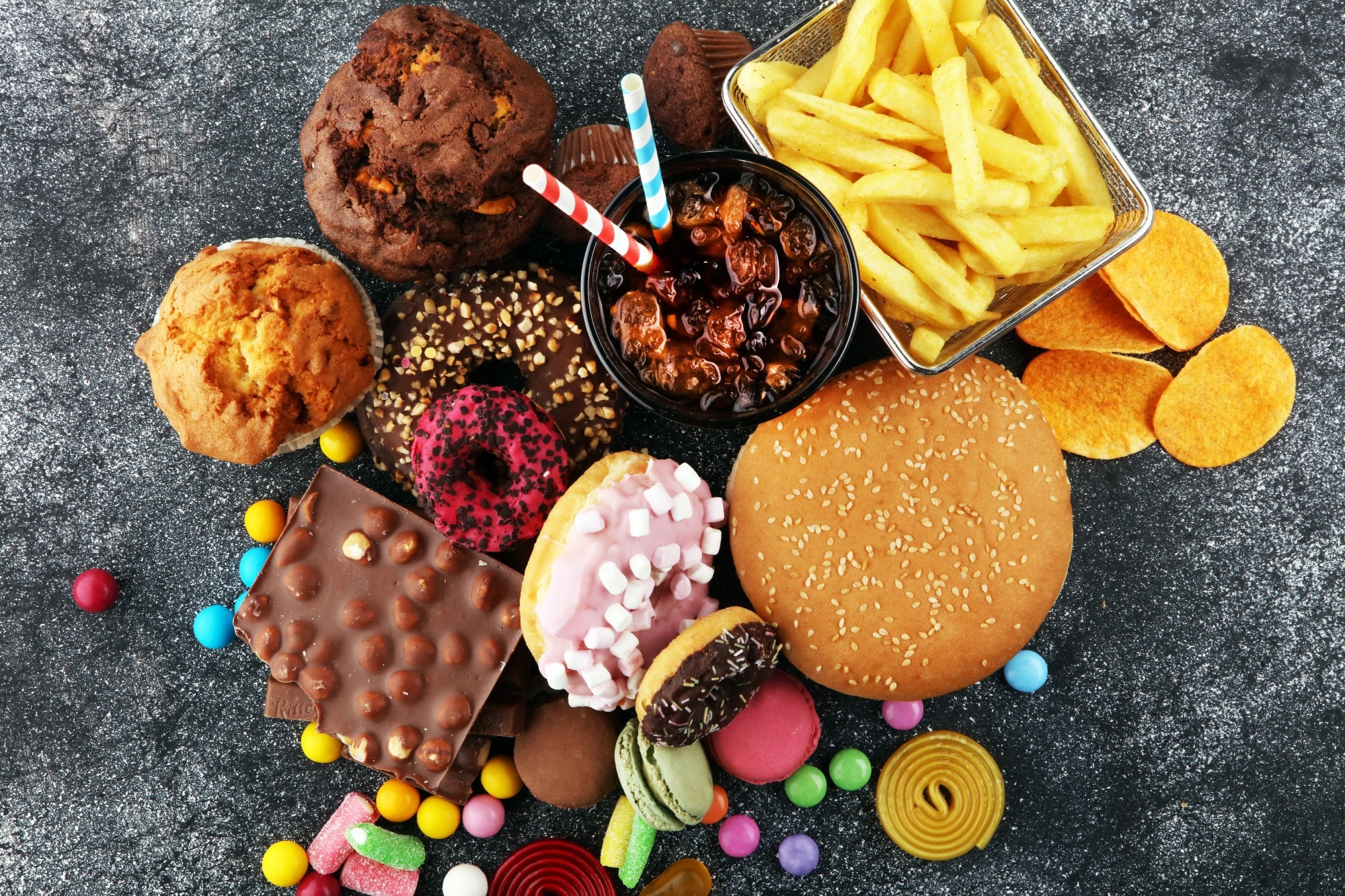Epidemiological evidence has revealed the adverse effects of ultra-processed food (UPF), particularly in the manifestation of obesity. However, very little evidence is available that establishes causality. Recently, scientists reviewed the proposed mechanism associated with UPF consumption and enhanced risk of obesity. This study is available in the journal Advances in Nutrition.
 Review: Ultra-Processed Foods and Obesity Risk: A Critical Review of Reported Mechanisms. Image Credit: beats1 / Shutterstock
Review: Ultra-Processed Foods and Obesity Risk: A Critical Review of Reported Mechanisms. Image Credit: beats1 / Shutterstock
Obesity and Dietary Recommendations
Obesity affects health negatively and also increases the burden on the healthcare system. Therefore, it is essential to develop primary and secondary prevention strategies, including encouraging a healthy diet.
Recent studies have shown that food processing is directly linked to the obesity epidemic. To amend this, for dietary guidance, a classification system (NOVA) was developed. NOVA comprises four food groups, including UPF, which is regarded as the most problematic food type. This is because UPF has a high concentration of added salt, sugar, and fats. These foods are designed to be hyper-palatable, convenient, profitable, and have a stable shelf life.
Based on the NOVA classification system, moderate UPF consumption has been approved by the World Health Organization. The "Great Debates" series in the American Journal of Clinical Nutrition highlighted the debate that increased consumption of UPF enhances BMI in the population. Although multiple meta-analyses and systematic reviews have shown that UPF consumption leads to obesity, these findings cannot be used to formulate a robust dietary recommendation.
Dietary recommendations are developed based on epidemiological, mechanistic, and controlled clinical trial data, which are currently lacking. This approach helps describe the scope of the problem, identify the vulnerable group, establish causality, and characterize the underlying mechanism responsible for the problem.
UPF vs. NUPF
To date, no studies have documented the mechanistic link between UPF and increased body weight. Many European countries obtain between 50% and 91% of nutrients from highly processed food. Interestingly, a recent American cohort study reported that UPF significantly contributes to vitamin E, folate, calcium, thiamine, and niacin. However, it is not clear whether this finding was based on minimally processed food.
Typically, non-UPF (NUPF) are more expensive and require a high preparation time. These foods are restricted to specific geographic areas and are subject to availability. NUPFs also have a shorter shelf life, increasing the risk of food spoilage and food poisoning. Food processing entails food safety by increasing food shelf life via the addition of preservatives.
Underlying Mechanisms Linked to UPF and Obesity
The underlying mechanisms related to the consumption of UPF and obesity have been categorized into three groups, i.e., food choice, food composition, and digestive processes. Food choice is associated with shelf-life, cost, packaging, hyper-palatability, and stimulation. Food composition deals with nutritional content, texture, added fat, sugar and salt, calories, energy density, additives, and sweeteners. Digestive processes are linked with the gut microbiome, gastrointestinal transit time, gastric emptying time, and oral processing/eating rate.
The NOVA system provides guidance for optimal food choices that benefit health. It only points out foods that need to be avoided instead of providing guidance on portions or frequencies that aids in obesity. The nutrient contents of food are not discussed by NOVA. Adherence to NOVA recommendations is debatable, particularly linked to UPFs.
Initially, the high sugar, salt, and fat content in UPF were thought to be the main culprits promoting weight gain. Later, the industrial food processing system was considered the causal agent of adverse issues. It was again proposed that food formulation, instead of processing, promotes adverse health effects. More recently, scientists have been concerned about the unintentional introduction of harmful elements, such as heavy metals, into the food chain and sustainability.
Interestingly, UPF intake was not always linked with weight gain, and hyper palatability or altered appetite did not always affect gut hormones or eating rates. Not much data was found on the effect of dietary fiber (high or low), food texture, gastric emptying, and intestinal transit time linked to UPF on the incidence of obesity. Due to insufficient data on the microbiome, food additives, food cost, appetite stimulation, and packaging, the benefits and risks associated with UPF avoidance could not be determined.
Choosing a properly balanced and varied diet is vital and extremely beneficial to health. Balance and variety are two fundamental principles of the guidance offered by the World Health Organization and the Food and Agriculture Organization for sustainable healthy diets.